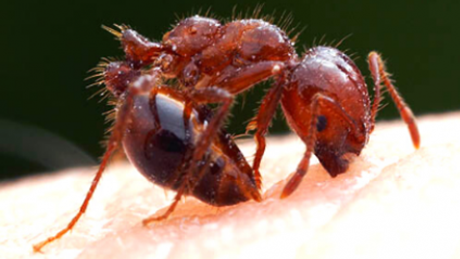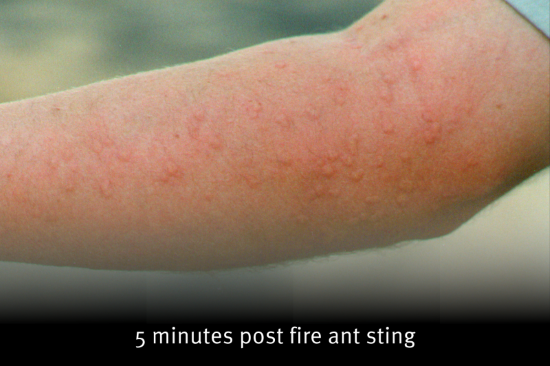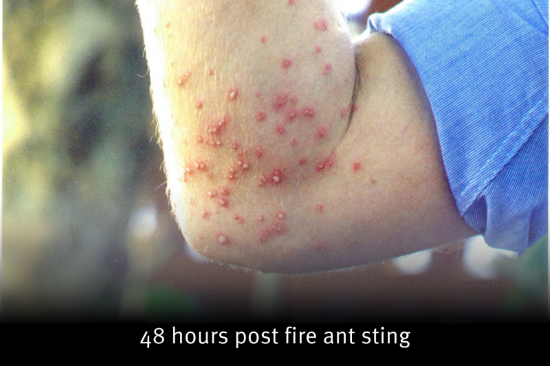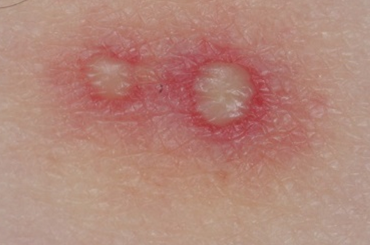Information for medical practitioners
Important
Medical diagnosis helps inform early detection. When a medical practitioner suspects a fire ant attack has occurred in NSW, they must immediately report the case by calling the NSW Biosecurity Helpline 1800 680 244.
The presence of fire ants in NSW is notifiable under the NSW Biosecurity Act 2015. Medical practitioners have a duty to notify the NSW Department of Primary Industries if they suspect or confirm a patient has been stung by fire ants in NSW.
Fire ants are a small 2 to 6 mm invasive ant from South America that cause extreme economic, environmental, and social impacts.
Fire ant stinging attacks are most likely to occur in northern NSW, close to the border with Southeast Queensland, but could occur elsewhere in NSW.
If ants are present on a victim, collect a specimen for identification.
Wear latex gloves to prevent stings. Using a tissue, collect the ants and put them in a jar which can be sealed and place in the freezer.
Characteristics of fire ant attack
- Fire ants are aggressive and will swarm and attack people and animals if disturbed.
- Tens to hundreds of ants can swarm onto a person within a few seconds and sting simultaneously, injecting venom that causes a painful local reaction.
- Each ant can deliver multiple stings. It’s possible, but unlikely a victim would be stung only once or twice.

Characteristics of fire ant stings
- Stings may initially appear as raised welts or hive-like lesions associated with intense burning, itchiness and redness.
- Small pustules or blisters usually develop at the sting site after a couple of hours or up to two days later. These may be itchy and take up to 10 days to heal.
- Some people may develop severe swelling at the sting site.

Characteristics of fire ant stings
- Stings may initially appear as raised welts or hive-like lesions associated with intense burning, itchiness and redness.
- Small pustules or blisters usually develop at the sting site after a couple of hours or up to two days later. These may be itchy and take up to 10 days to heal.
- Some people may develop severe swelling at the sting site.

Systemic allergic reactions
- Severe allergic reactions and anaphylaxis can occur following fire ant stings.
- Severe reactions and anaphylaxis may be more common in people previously stung by fire ants or who have a history of allergic reactions to insects.

Treatment of fire ant stings
- use simple analgesia and a cold compress or ice to relieve swelling and pain
- wash the affected area with soap and cool water and advise patients to keep the sting site clean
- keep the blisters intact to prevent infection. Advise patients to avoid scratching
- antihistamines can be considered to manage minor localised reactions and itching
- topical or oral steroids can be considered for large, localised reactions
- manage anaphylaxis immediately with adrenaline, as per standard anaphylaxis protocols
- call 000 and refer to an Emergency Department if severe symptoms appear
- call the Poisons Information Centre 131 126 for clinical advice.